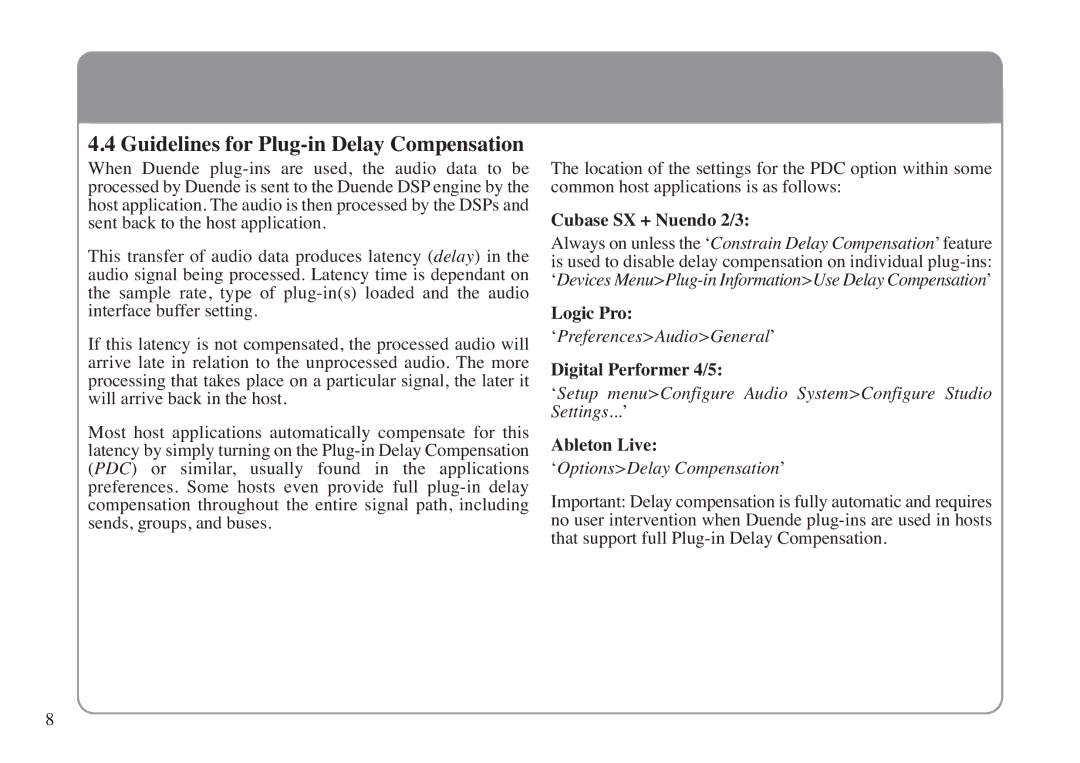
4.4 Guidelines for | ||||
When Duen de | io data to be | |||
processed by Duende is sent to the Duende DSP engine by the | ||||
host application. The audio is then processed by the DSPs and | ||||
sent back to the host application. |
|
|
| |
This transfer of au dio data | produces latency (delay) in the | |||
audio signal being processed. Latency time is dependant on | ||||
the samp le rate, type of | oaded and the audi o | |||
interface buffer setting. |
|
|
|
|
If this latency is not com pensated, the processed audio will | ||||
arrive la te in relation to the unproces | sed audio. The more | |||
processing that takes place on a particular signal, the later it | ||||
will arrive back in the host. |
|
|
|
|
Most host ap plications automat ically com pensate for t his | ||||
latency by simply turning on the | ||||
(PDC) or s imilar, usually found in the appli | cations | |||
preferences. Some hosts e | ven provide full pl | |||
compensation thro ughout the enti re signal | path, incl uding | |||
sends, groups, and buses. |
|
|
|
|
The location of the settings for the PDC option within some common host applications is as follows:
Cubase SX + Nuendo 2/3:
Always on unless the ‘Constrain Delay Compensation’ feature is used to disable delay compensation on individual
Logic Pro:
‘Preferences>Audio>General’
Digital Performer 4/5:
‘Setup menu>Configure Audio System>Configure Stu dio Settings...’
Ableton Live:
‘Options>Delay Compensation’
Important: Delay compensation is fully automatic and requires no user intervention when Duende
8
